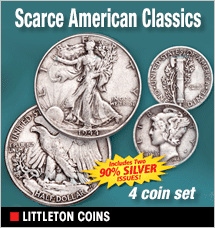
 Humphrey Bogart stands on the train platform in the rain, reading the letter Ingrid Bergman has written to him. The next few frames of the movie are focused on the letter, its handwriting melting to a blur as the ink drips down the page from the rain.
Humphrey Bogart stands on the train platform in the rain, reading the letter Ingrid Bergman has written to him. The next few frames of the movie are focused on the letter, its handwriting melting to a blur as the ink drips down the page from the rain.
Some classic films, such as The Letter (1940) and Love Letters (1945), and The Shop Around the Corner (1940), have plots that are predicated on a letter. A letter is the catalyst for conflict in the story. There are a lot of movie plots we could add to this category, like A Letter to Three Wives (1949). A letter is the incriminating evidence, or provokes a mystery, or a love letter may bring the wrong lovers together, or incite jealousy.
Sometimes a letter has nothing to do with the plot, but it’s there as a convenience. Consider White Christmas (1954), where Anne Whitfield passes a letter written by Rosemary Clooney to her sister played by Vera-Ellen. The letter informs Vera-Ellen that Rosemary, not wanting to stand in the way of what she thinks is her sister’s impending marriage, breaks up their stage act and has taken a job in New York. A shocked Vera-Ellen merely glances at the letter to know all its contents, and passes it to Danny Kaye, who, likewise, barely looks at the letter to know everything in it. Everybody in old movies reads very fast, but the camera pauses on the letter for us because we’re slow readers.
The letter is shared with us. It is as if Vera-Ellen has passed the letter around to us too. We are reading over her shoulder, and we experience the news together.
Who really wrote the letters in the movies? Was it a staff of talented handwriting stand-ins? A studio secretary with a high school prize for penmanship? I’d love to know. Sometimes we actually get to see a close-up of a hand in the graceful act of writing the letter, usually with a fountain pen in flowing, neat script.
Perhaps the most famous letter in literature is the very long and detailed note Mr. Darcy wrote to Elizabeth Bennett in Pride and Prejudice, explaining the back story of his relationship with Mr. Wickham and the treachery done to his sister, and why Darcy interfered with Mr. Bingley’s relationship with Elizabeth’s sister Jane. It’s a bomb dropped in the middle of the story, and turns the whole plot on its head.
He’s a closemouthed fellow when it comes to conversation, but in a letter, Mr. Darcy goes on forever, yadda, yadda, yadda. We would not likely see such a long letter printed verbatim in a modern novel. Even modern film adaptations of Darcy’s famous letter tend to abbreviate his epistle, or illustrate its points, instead, in dramatic flashback scenes. The directors today must think modern audiences will not sit still for a little juicy letter reading.
In many schools nowadays, cursive handwriting is no longer taught. Many of us have youngsters in our families who cannot write or read cursive handwriting. This is unfortunate on many levels, most especially that they will not be able to read historic documents, including the personal letters preserved in their own families.
But it also means they will not be able to read Rosemary Clooney’s letter to Vera-Ellen, or Ingrid Bergman’s letter to Bogie, or any of the handwritten clues in classic films as to why the actors are behaving the way they do — for their actions are not always explained. Much happens off screen that can be neatly summarized in a note. How will today’s kids get the low-down on the big doings if they can’t read cursive handwriting?
“But why is Bogie sad, Mommy?”
Now, doesn't that just tear your heart out?
The letter writing and letter reading scenes are quiet and passive, yet still powerfully dramatic. Those letters convey intimate news. Sometimes the letters are kissed or embraced because they represent the person who wrote them. Sometimes they are stashed quickly in a hiding place: a book, a pocket, a ruffled bodice. Sometimes they are burned, or crumpled and thrown away.
This is what Bogie does when the goodbye letter from Casablanca that kicks his guts out has become illegible from the raindrops that substitute for tears, as Ingrid’s words bleed down the page. He stands on the steps of the now moving train, crushes the soggy paper in his fist, and tosses it to the tracks.
Deleting an email was never so dramatic.
Jacqueline T. Lynch is the author of Ann Blyth: Actress. Singer. Star. and Movies in Our Time: Hollywood Mirrors and Mimics the Twentieth Century, available online at Amazon, CreateSpace, and the author. Website: www.JacquelineTLynch.com.



























































